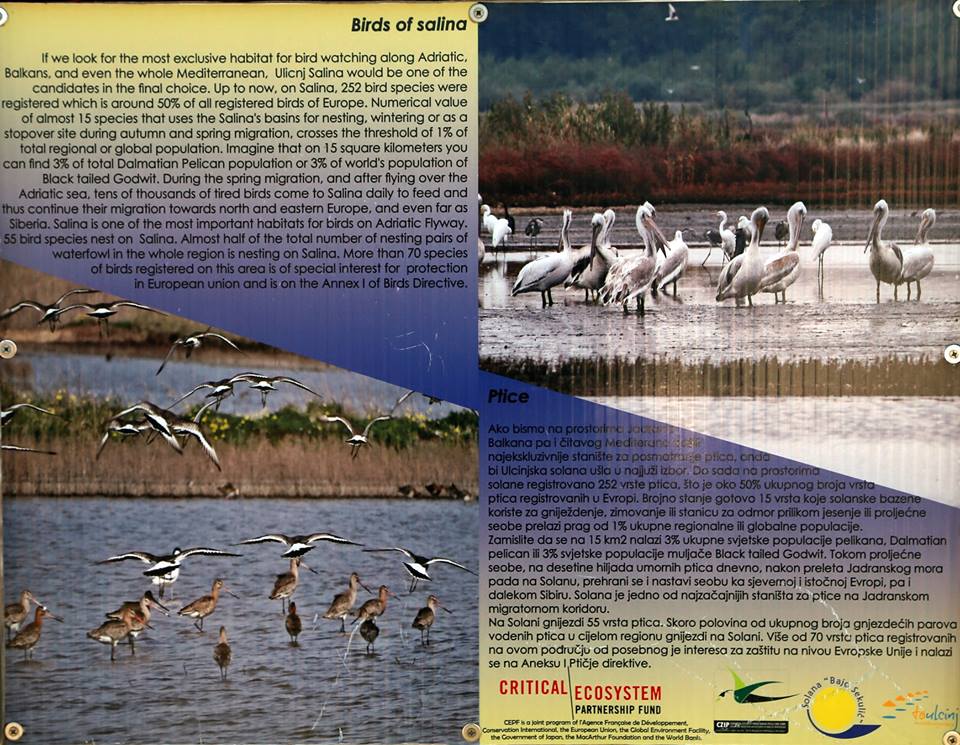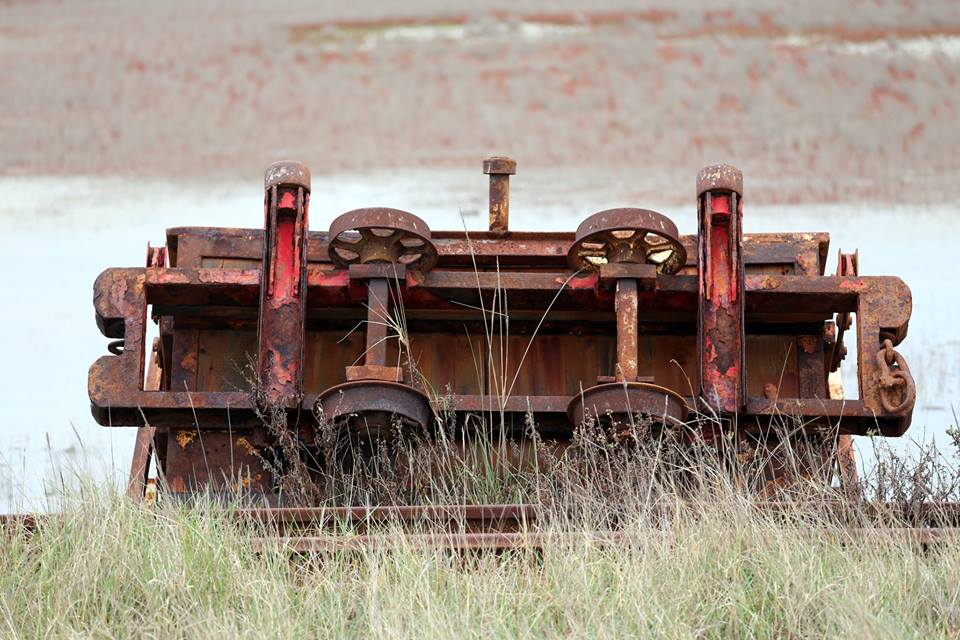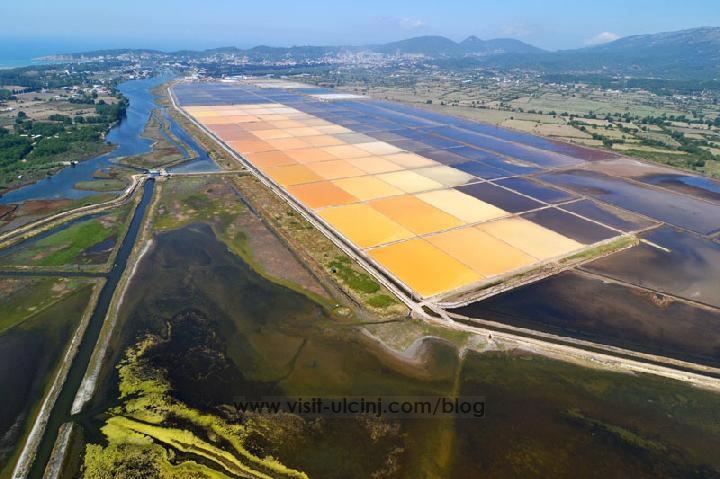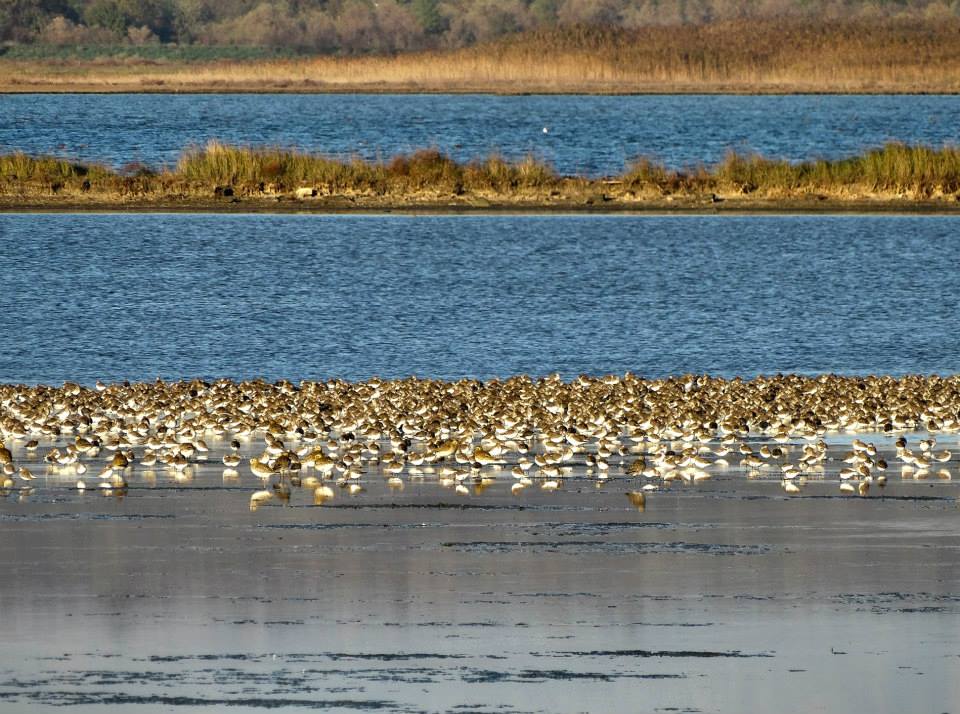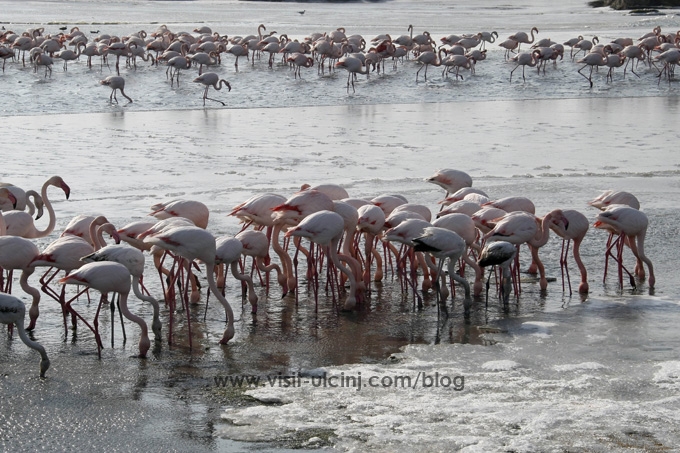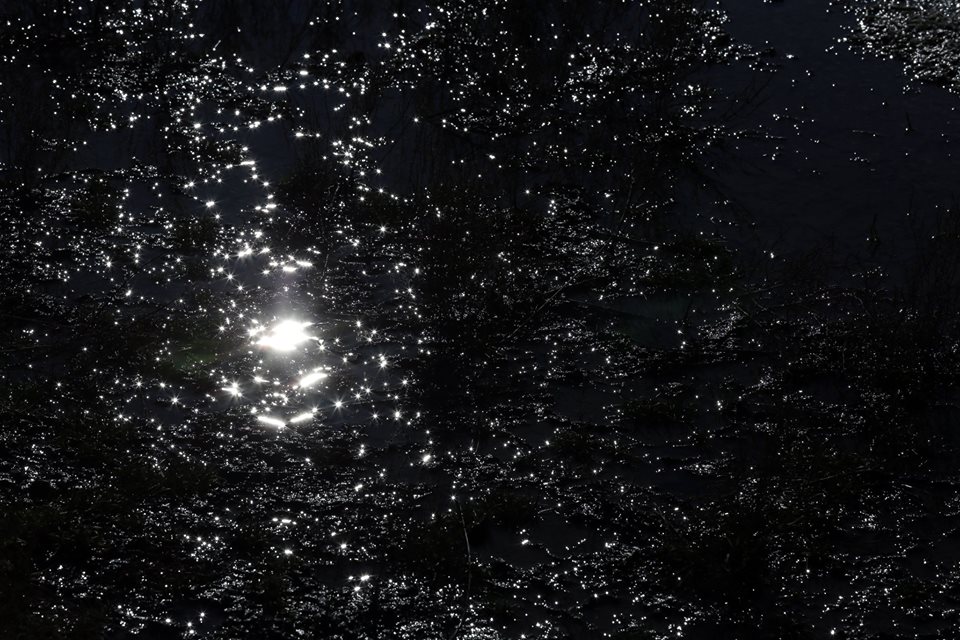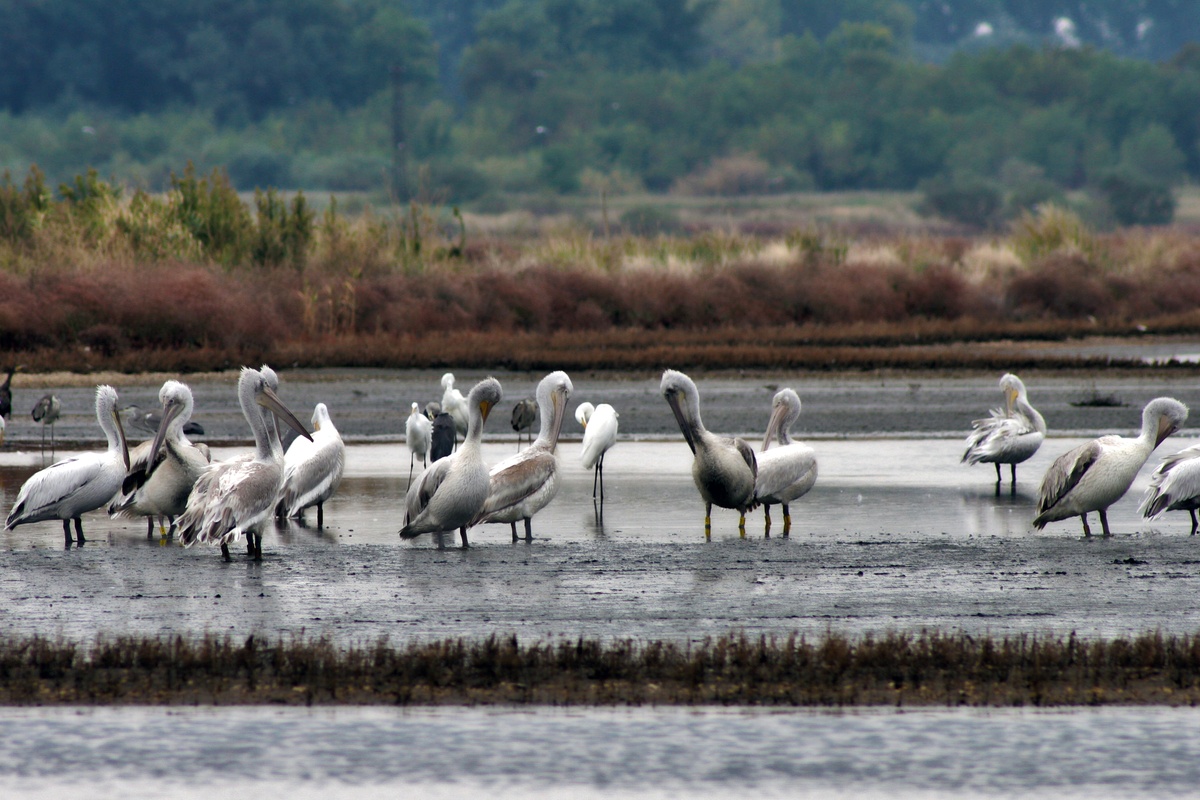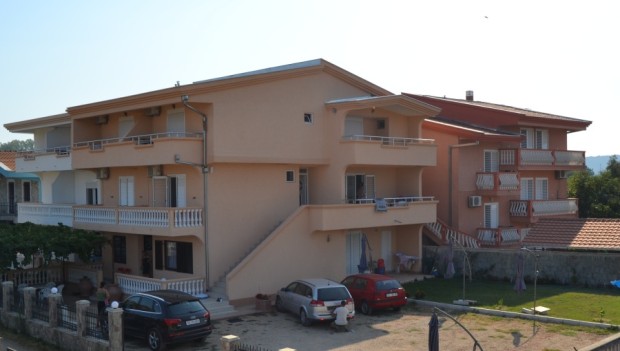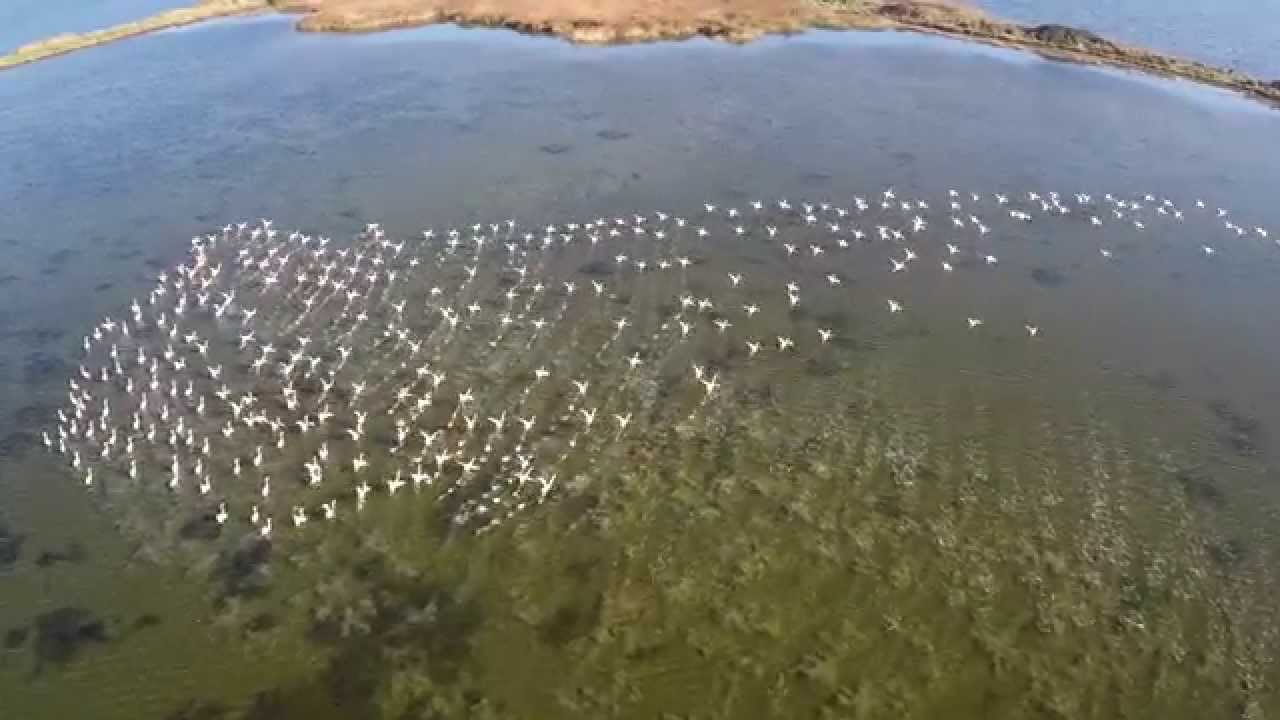 Translated by Arijeta Ljeskovac
Translated by Arijeta Ljeskovac
Ulcinj Salina is one of the largest Salinas throughout the Mediterranean. It is a haven for wildlife, a bird sanctuary. Breeding and wintering have become a part and parcel of this place. In the last 30 years, Salina has obtained both national and international recognition. It is a perfect example of a synergy between the biodiversity protection and salt production. The synergy between the sun and wind brings forth numerous health benefits, such the formation of the medicinal mud.
Thanks to the rich biodiversity, bird-watching has become an international pastime.
It is a meeting point of different bird species, such as Microcarbo pygmeus, Glareola pratincola, Phoenicopterus roseus, Pelecanus, etc. Poaching was banned in 1984.
Salina was declared a biosphere reserve by the board of directors in 2004. Poaching, fishing, and the movement of unauthorized people were banned in 2004. All this was undertaken for a sole reason ŌĆō the prevention of outer influence on the production of salt. Salina has ceased with the production of the ŌĆ£white goldŌĆØ after 80 years of ongoing work.
Ulcinj Salina is not a work of nature. It was created by humans as a rough draft, but nature turned it into a masterpiece, creating a huge biodiversity.
Whatever you have seen on TV, whatever you have read in the newspapers, on blogs, portals, sites, nothing will ever bring you that close to understand what Salina actually is. You have to step its soil, and explore it all by yourself.
Salina ŌĆ£Bajo Sekuli─ćŌĆØ┬Āis the oldest enterprise in Ulcinj. Everything your eyes witness while visiting it, is a bad example of what privatization is. The bad example was set in 2005, when Veselin Barovic, the Prime MinisterŌĆÖs friend, bought Salina for nothing more than 800.000Ōé¼. The company went belly-up; there was a national shortage of salt production.
Barovic wanted to strike it rich by trying to sell it for 260 million Ōé¼. Had he sold it, he would have made a 300-fold profit.
He never had to break a single sweat to invest in the company. The company would have been destroyed, and the land sold.
The pipes that incessantly carried the water along with the food for flamingos and other birds coming from different places of the world, ceased to work properly. (Slobodna Evropa, 7. avgust, 2015)
In case Salina continues to produce the salt the way it did up to the very last harvest witnessed in 2013, it would definitely be using the oldest way ever. ŌĆō said Aleksandar Perovic from CZIP.
Aleksandar mentioned Secovlje, the largest Slovenian Saltwork, the cultural monument of national importance.
The Natives say that the Piran Salt should be included in UNESCOŌĆÖS World Heritage List.
Yet Se─Źovlje is 15 times smaller than Ulcinj Salina.
Odd defense mechanisms
┬Ā
You are mistaken if you think that being messy is only a human trait. Messiness is a part and parcel of numerous bird species in Ulcinj Salina ŌĆō their nests are too dirty, therefore they are foul-smelling.
Flying is a very efficient way of defense against numerous predators. Nevertheless, a great deal of birds that are unable to fly or run away from danger, have developed a brilliant defense mechanism; once in danger they vomit a foul, sticky substance, that clings to the predatorŌĆÖs feathers.
Why does this happen? The answer is simple. The hatchlings throw up once they sense danger coming close to their nests.
With 245 registered species, Salina is a real paradise for birds.
The climate change has an effect on the timing of migration. This year, the migration is late due to the mild winter.
12 species of amphibians, 28 species of reptiles, and 32 species of fish have been registered so far.
Flamingos obtain their pink color by eating brine shrimps. According to researchers, 24 tones of brine shrimps were found in Salina during 1999.
Buffet breakfast
If you happen to visit Salina during spring or early summer, feel free to pick the edible (Salicornia herbacea).
It can be used for salads and stews. There is no need to add salt, due to its high salt content.
Salicornia herbacea contains proteins, fat, SacharoseŌĆ”
It grows in high-salt coastal marshes. Salicornia can only be found in Tivat and Ulcinj.
Miraculous cosmetics from Solana
After visiting Salina, you will forget about day and night creams, as well as moisturizers for oily and dry skin. All the creams and moisturizers will be replaced by the medicinal mud that you can dig up all by yourself. You will have to dig some 30-50cm to reach the black substance.
┬Ā
Medicinal mud usage
┬Ā
Medicinal mud is used for skin and rheumatic diseases. Since itŌĆÖs loaded with health benefits, this mud can treat arthritis. Salina is truly a paradise for eco and health tourismŌĆ”
Ulcinj Salina has achieved a widespread recognition, catching the attention of every single being, especially birdwatchers.
Numerous agencies have brought Ulcinj Salina to international attention. It qualifies as Emerald site of Wetlands of International Importance. Salina is a perfect wetland since it consists of marshes, swamps; saturated land. Salina faces a huge threat, the threat of draining. Drainage schemes, overfishing, poaching, are done for commercial reasons. Salina satisfies only 6 out of 9 criteria for identifying as Wetland of International Importance. The European Nature Heritage Fund ŌĆō EuroNatur stated that this wetland should be protected by the law.




